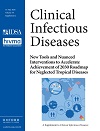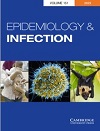Latest Publications
Membraneless channels sieve cations in ammonia-oxidizing marine archaea
 Andriko von Kügelgen, C. Keith Cassidy, Sofie van Dorst, Lennart L. Pagani, Christopher Batters, Zephyr Ford, Jan Löwe, Vikram Alva, Phillip J. Stansfeld & Tanmay A. M. Bharat
Andriko von Kügelgen, C. Keith Cassidy, Sofie van Dorst, Lennart L. Pagani, Christopher Batters, Zephyr Ford, Jan Löwe, Vikram Alva, Phillip J. Stansfeld & Tanmay A. M. Bharat
Nitrosopumilus maritimus is an ammonia-oxidizing archaeon that is crucial to the global nitrogen cycle. A critical step for nitrogen oxidation is the entrapment of ammonium ions from a dilute marine environment at the cell surface and their subsequent channelling to the cell membrane of N. maritimus. Here we elucidate the structure of the molecular machinery responsible for this process, comprising the surface layer (S-layer), using electron cryotomography and subtomogram averaging from cells. We supplemented our in situ structure of the ammonium-binding S-layer array with a single-particle electron cryomicroscopy structure, revealing detailed features of this immunoglobulin-rich and glycan-decorated S-layer. This in situ structural study illuminates the biogeochemically essential process of ammonium binding and channelling, common to many marine microorganisms that are fundamental to the nitrogen cycle.
Xavier Didelot publications
 Presence of phage-plasmids in multiple serovars of Salmonella enterica
Presence of phage-plasmids in multiple serovars of Salmonella enterica
Satheesh Nair, Clare R. Barker, Matthew Bird, David R. Greig, Caitlin Collins, Anaïs PainsetMarie Chattaway, Derek Pickard, Lesley Larkin, Saheer Gharbia, Xavier Didelot and Paolo Ribeca
Evidence is accumulating in the literature that the horizontal spread of antimicrobial resistance (AMR) genes mediated by bacteriophages and bacteriophage-like plasmid (phage-plasmid) elements is much more common than previously envisioned. For instance, we recently identified and characterized a circular P1-like phage-plasmid harbouring a blaCTX-M-15 gene conferring extended-spectrum beta-lactamase (ESBL) resistance in Salmonella enterica serovar Typhi. As the prevalence and epidemiological relevance of such mechanisms has never been systematically assessed in Enterobacterales, in this study we carried out a follow-up retrospective analysis of UK Salmonella isolates previously sequenced as part of routine surveillance protocols between 2016 and 2021. In addition to providing a first comprehensive view of the presence of phage-plasmids in Salmonella, our work highlights the need for a better surveillance and understanding of phage-plasmids as AMR carriers, especially through their characterization with long-read sequencing. Microbial Genomics. May 2024
 Rapid expansion and international spread of M1UK in the post-pandemic UK upsurge of Streptococcus pyogenes
Rapid expansion and international spread of M1UK in the post-pandemic UK upsurge of Streptococcus pyogenes
The UK observed a marked increase in scarlet fever and invasive group A streptococcal infection in 2022 with severe outcomes in children and similar trends worldwide. Here we report lineage M1UK to be the dominant source of invasive infections in this upsurge. Compared with ancestral M1global strains, invasive M1UK strains exhibit reduced genomic diversity and fewer mutations in two-component regulator genes covRS. The emergence of M1UK is dated to 2008. Following a bottleneck coinciding with the COVID-19 pandemic, three emergent M1UK clades underwent rapid nationwide expansion, despite lack of detection in previous years. All M1UK isolates thus-far sequenced globally have a phylogenetic origin in the UK, with dispersal of the new clades in Europe. While waning immunity may promote streptococcal epidemics, the genetic features of M1UK point to a fitness advantage in pathogenicity, and a striking ability to persist through population bottlenecks. Nature Communications. May 2024
Accelerating Progress Towards the 2030 Neglected Tropical Diseases Targets: How Can Quantitative Modeling Support Programmatic Decisions?
 Vasconcelos, Andreia, King, Jonathan D., Nunes-Alves, Cláudio, Anderson, Roy, Argaw, Daniel, Basáñez, Maria-Gloria, Bilal, Shakir, Blok, David J., Blumberg, Seth, Borlase, Anna, Brady, Oliver J., Browning, Raiha, Chitnis, Nakul, Coffeng, Luc E., Crowley, Emily H, Cucunubá, Zulma M., Cummings, Derek A. T., Davis, Christopher N., Davis, Emma L., Dixon, Matthew, Dobson, Andrew, Dyson, Louise et al
Vasconcelos, Andreia, King, Jonathan D., Nunes-Alves, Cláudio, Anderson, Roy, Argaw, Daniel, Basáñez, Maria-Gloria, Bilal, Shakir, Blok, David J., Blumberg, Seth, Borlase, Anna, Brady, Oliver J., Browning, Raiha, Chitnis, Nakul, Coffeng, Luc E., Crowley, Emily H, Cucunubá, Zulma M., Cummings, Derek A. T., Davis, Christopher N., Davis, Emma L., Dixon, Matthew, Dobson, Andrew, Dyson, Louise et al
Over the past decade, considerable progress has been made in the control, elimination, and eradication of neglected tropical diseases (NTDs). Mathematical modeling can help inform selection of interventions to meet the targets set out in the NTD road map 2021–2030, and such studies should prioritize questions that are relevant for decision-makers, especially those designing, implementing, and evaluating national and subnational programs. In September 2022, the World Health Organization hosted a stakeholder meeting to identify such priority modeling questions across a range of NTDs and to consider how modeling could inform local decision making. Here, we summarize the outputs of the meeting, highlight common themes in the questions being asked, and discuss how quantitative modeling can support programmatic decisions that may accelerate progress towards the 2030 targets.
Extreme mortality during a historical measles outbreak on Rotuma is consistent with measles immunosuppression
 Susie Cant, G. Dennis Shanks, Matt J. Keeling and Bridget S. Penman
Susie Cant, G. Dennis Shanks, Matt J. Keeling and Bridget S. Penman
In 1911, Rotuma in Fiji was hit by a measles pidemic, which killed 13% of the island population. Detailed records show two mortality peaks, with individuals reported as dying solely from measles in the first and from measles and diarrhoea in the second. MeHere, we investigate whether the pattern of mortality on Rotuma in 1911 was a consequence of the immunosuppressive effects of measles. We use a compartmental model to simulate measles infection and immunosuppression. Whilst immunosuppressed, we assume that individuals are vulnerable to dysfunctional reactions triggered by either (i) a newly introduced infectious agent arriving at the same time as measles or (ii) microbes already present in the population in a pre-existing equilibrium state. We show that both forms of the immunosuppression model provide a plausible fit to the data and that the inclusion of immunosuppression in the model leads to more realistic estimates of measles epidemiological parameters than when immunosuppression is not included.
The 2024 Europe report of the Lancet Countdown on health and climate change: unprecedented warming demands unprecedented action
 Kim R van Daalen et al incl. Orin Courtenay
Kim R van Daalen et al incl. Orin Courtenay
The Lancet Countdown in Europe was established in 2021, to assess the health profile of climate change aiming to stimulate European social and political will to implement rapid health-responsive climate mitigation and adaptation actions. In 2022, the collaboration published its indicator report, tracking progress on health and climate change via 33 indicators and across five domains. This new report tracks 42 indicators highlighting the negative impacts of climate change on human health, the delayed climate action of European countries, and the missed opportunities to protect or improve health with health-responsive climate action. Considering that negative climate-related health impacts and the responsibility for climate change are not equal at the regional and global levels, this report also endeavours to reflect on aspects of inequality and justice by highlighting at-risk groups within Europe and Europe's responsibility for the climate crisis.
Epidemiological and health economic implications of symptom propagation in respiratory pathogens : a mathematical modelling investigation
 Asplin, Phoebe, Keeling, Matt J., Mancy, Rebecca and Hill, Edward M.
Asplin, Phoebe, Keeling, Matt J., Mancy, Rebecca and Hill, Edward M.
We propose a novel framework for incorporating different levels of symptom propagation into models of infectious disease transmission via a single parameter, α. Varying α tunes the model from having no symptom propagation (α = 0, as typically assumed) to one where symptoms always propagate (α = 1). For parameters corresponding to three respiratory pathogens—seasonal influenza, pandemic influenza and SARS-CoV-2—we explored how symptom propagation impacted the relative epidemiological and health-economic performance of three interventions, conceptualised as vaccines with different actions: symptom-attenuating (labelled SA), infection-blocking (IB) and infection-blocking admitting only mild breakthrough infections (IB_MB). Overall, the preferred intervention type depended on the combination of the strength of symptom propagation and uptake. Given the importance of determining robust public health responses, we highlight the need to gather further data on symptom propagation, with our modelling framework acting as a template for future analysis.
